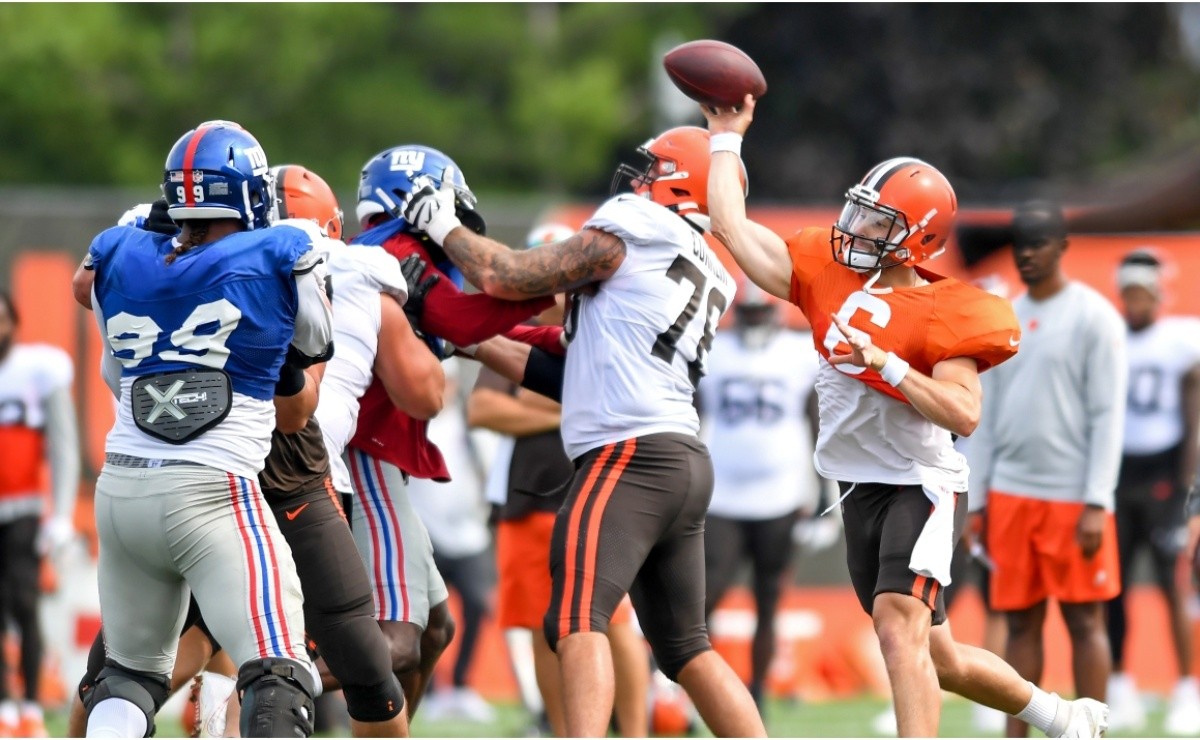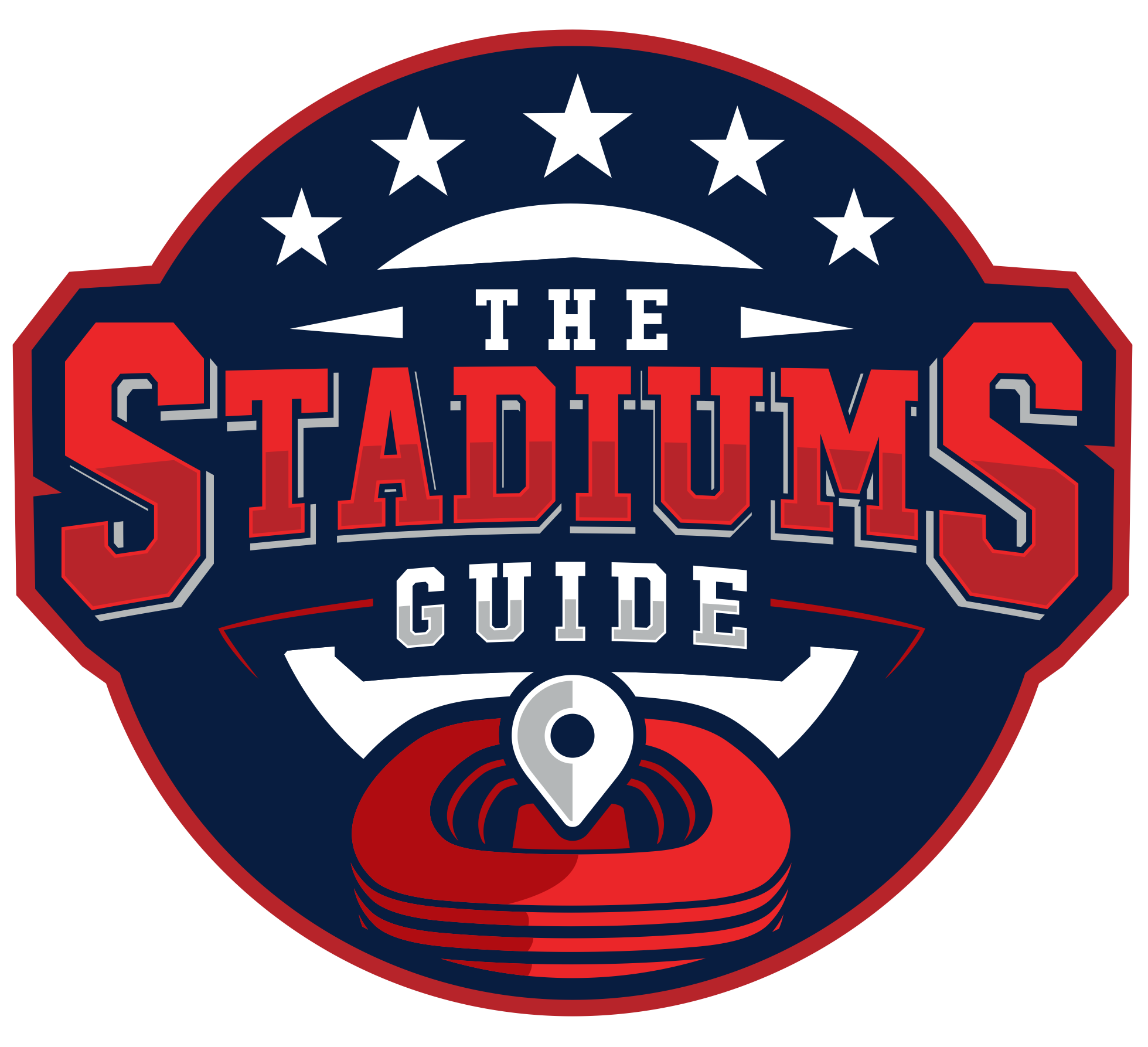As the NFL season approaches, fans and experts alike turn their attention to the rosters and preparations leading up to the action-packed games.
An often-overlooked but crucial component of a team’s success on the field is the practice squad.
Comprised of players honing their skills, waiting for an opportunity to shine, and providing valuable support to their team, NFL practice squads serve a vital role in the competitive landscape of professional football.
The practice squad, as its name suggests, allows players to practice and develop with a team without occupying a spot on the main roster. These players can be called upon to assist the team during training sessions or step in during regular-season games in the event of injuries.
Understanding the rules, pay structure, and limitations of practice squads can enhance one’s appreciation for their significance in the NFL.
In this article, we will delve into the intricate aspects of NFL practice squads, including eligibility criteria, size limits, compensation, and notable examples of players who have transitioned from practice squad members to key contributors on their teams.
With this knowledge, fans can better comprehend the behind-the-scenes aspects of the game and gain a deeper understanding of what it takes to climb the ranks in the highly competitive world of professional football.
Understanding Practice Squads
Practice Squads’ Role in the NFL
Practice squads play a crucial role in the NFL. They serve as a support system for the main team during practice sessions and help the coaching staff with game preparation.
Players on the practice squad can be called up to the 53-man roster in case of a significant injury or a need for a rotational change. This offers opportunities for lesser-experienced players to showcase their talent and eventually make their way into the primary team.
Additionally, practice squad players gain valuable experience and insight by working alongside veteran players and coaches.
/cdn.vox-cdn.com/uploads/chorus_image/image/71302757/1417545473.0.jpg)
Eligibility Criteria
The eligibility criteria for joining an NFL practice squad have evolved over the years.
In 2023, practice squads are made up of several types of players:
- Players without an accrued season of NFL experience: An accrued season is gained by being on a team’s roster, injured reserve, or a physically unable to perform list for six or more games during a season.
- Free agent players: These are players who have accrued seasons in the NFL but still retain eligibility for the practice squad due to certain restrictions.
There are some limitations to participating in the practice squad. For instance, a player cannot sign with another practice squad while still on their current one.
Also, a practice squad player may not sign a contract with their team’s next opponent after 4 p.m. ET, six days before the game (or 10 days preceding in bye weeks).
As for the financial aspect, practice squad players make $11,500 per week, totaling $207,000 for 18 weeks.
Although this pay is considerably lower than that of players on the 53-man roster, it still offers a decent salary for those looking to break into the league.
Team Structure and Player Limit
Size and Reshuffling
The NFL’s practice squad serves as a developmental and reserve pool for teams to draw from throughout the season.
It has undergone changes in recent years, with the number of players on the squad expanding.
In 2014, the limit was increased from 8 to 10 players, and in 2020, it further increased to 16 players, a change that has continued since then.
Teams can shuffle their practice squads as necessary, such as promoting players to their 53-man active roster or releasing them in order to accommodate new signings.
The practice squad is especially important when injuries or rotational changes occur, as players can be called up from the squad to fill in crucial roles.

Limitations on Player Movement
As per the NFL’s rules, player movement between practice squads and active rosters has certain restrictions.
The new collective bargaining agreement that came into effect a year before the pandemic allowed for the promotion of up to two players to the active roster in a given game week without giving the players a normal player contract.
However, these players must be returned to the practice squad following the game.
Players’ contracts on the practice squad can be different from those on the active roster.
For example, in 2021, all players with two or fewer accrued seasons made a minimum of $9,200 per week, while veterans with more than two accrued seasons received a higher minimum.
It is worth noting that once a player is signed to a practice squad, they can still be signed by another team.
However, if a player is signed by another team, that player must be directly added to the other team’s active 53-man roster, and they cannot be assigned to the other team’s practice squad.
Additionally, it is possible for a team to sign a player off another team’s practice squad and place them on their active roster, provided that the player is released from their current contract.
/cdn.vox-cdn.com/uploads/chorus_image/image/69802119/1234663297.0.jpg)
Compensation and Benefits
Salary
NFL practice squad players can earn different salaries based on their experience. Players with two or fewer accrued seasons of experience make $11,500 per week.
On the other hand, veterans with more experience can negotiate weekly pay between $15,400 and $19,900.
Over the course of an 18-week season, practice squad players’ salaries range from $207,000 to a substantial amount more, depending on their experience level.
Practice Squad Contracts
Practice squad contracts differ from regular player contracts, and they come with specific rules and guidelines.
A key point is that practice squad players can be signed to another team’s active roster at any time.
However, they may not sign with the team’s next opponent after 4 p.m. ET six days preceding the game (10 days preceding in bye weeks).
The NFL collective bargaining agreement allows up to two players per game week to be promoted to the active roster without receiving a standard player contract.
This gives practice squad players an opportunity to contribute to the team without affecting their contract status. Keep in mind, they cannot sign with another practice squad while on their current one.
In summary, while practice squad players earn less than their counterparts on the active roster, their salaries and contract flexibility provide a valuable opportunity to develop within the NFL system.
/cdn.vox-cdn.com/uploads/chorus_image/image/61080811/usa_today_10223619.0.jpg)
Notable Success Stories
One aspect of the NFL practice squads that bears mentioning is the success stories of players who have worked their way from the practice squad to starting positions in the league.
There have been several cases of players who began their careers on practice squads and went on to make significant contributions to their teams or even become star players.
James Harrison is one such example. The linebacker first signed as an undrafted free agent with the Pittsburgh Steelers in 2002 and spent time on the practice squad before finally making the active roster.
Harrison went on to become a dominating force in the NFL, earning multiple Pro Bowl selections and helping the Steelers win two Super Bowls. His work ethic and determination paid off, as he is now regarded as one of the greatest undrafted players in NFL history.
Another notable success story is Danny Amendola, a wide receiver who began his career on the Dallas Cowboys’ practice squad in 2008. He then spent time on the Philadelphia Eagles’ practice squad before finally finding a home with the New England Patriots in 2013.
Amendola made an immediate impact and became a vital piece of the Patriots’ offense. Throughout his career, he had several key plays in the Patriots’ postseason runs, earning two Super Bowl rings with the team.
Fred Jackson, a running back, is yet another player who started his NFL journey on a practice squad.
He joined the Buffalo Bills in 2006 after playing in NFL Europa and spent time on the practice squad before earning a spot on the active roster. Jackson went on to have a productive career with the Bills, becoming one of the franchise’s all-time leading rushers and a fan favorite.
These examples showcase the potential for success that exists within the practice squad system.
While not every player will rise to stardom or have a lasting impact in the NFL, it is clear that opportunity is there for those who are determined, hardworking, and talented.
The NFL practice squad has served as a launching pad for numerous successful careers, making it an important aspect of the league’s roster structure.
/cdn.vox-cdn.com/uploads/chorus_image/image/65150848/1168503062.jpg.0.jpg)
Recent Changes and Impact
In recent years, the NFL practice squad has undergone some significant changes that have in turn impacted its size, rules, and player eligibility.
Initially, the practice squad was limited to just five players, which expanded to 10 in 2014. By 2020, this limit was increased to 12, and in 2022, it reached its current size of 16 players.
This increase in practice squad size has allowed teams greater flexibility in managing their rosters, particularly during the ongoing pandemic.
The larger squad sizes provide more opportunities for aspiring NFL players to stay involved within a team, hone their skills, and remain prepared for when a chance to join the main roster arises.
Another notable change in practice squad rules is the adjustment to player eligibility. Previously, a player with more than two accrued seasons in the NFL would not be eligible for practice squad membership.
With the recent changes, eligibility has become more inclusive, allowing teams to maintain experienced players as well as more seasoned talent.
A key financial aspect related to practice squads is the weekly pay for its members. While the league minimum salary for an NFL player is around $58,000 per game, practice squad members can expect to make closer to $35,000 per week, ensuring a competitive level of compensation.
In summary, the recent changes to NFL practice squads have significantly impacted roster management, player eligibility, and compensation.
With an increased limit of 16 members, teams now have greater flexibility when assembling their rosters, providing more opportunities for players and fostering a competitive environment within the league.
James is a big time NBA Golden State follower, who makes sure to catch games when he's in the area. He likes to follow International Soccer, with an interest in small town soccer club, Blackburn Rovers located in the North on the UK.

